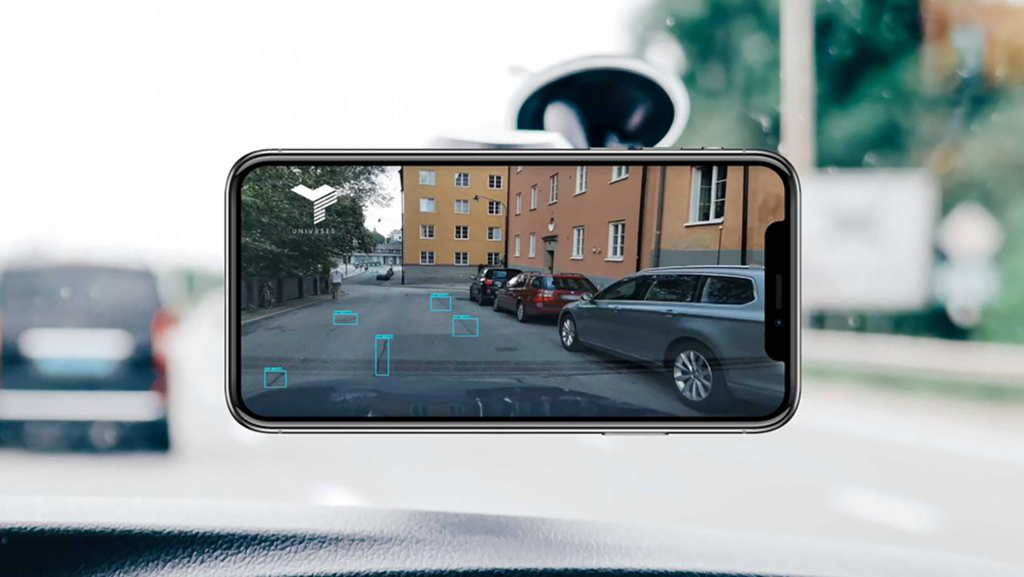New, connected ways of improving traffic and city management
AI, taxis and smart phones have the potential to revolutionize the way cities are managed, according to results from the Drive Sweden project Stockholm Virtual City. In the project, the participants used software in mobile phones to collect and analyze data on, among other things, road signs, potholes and road construction in Stockholm. The data has then been sent in real time to the city, enabling faster and better informed decisions. The potential for the technology is great.

Photo: Univrses
As a result of our cities becoming more dense, the complexity of the management of the city and its infrastructure increases dramatically. The Stockholm Virtual City project has therefore focused on connected solutions for parts of the infrastructure to help solve some of the challenges.
By installing smart phones in taxis, Univrses, the City of Stockholm and Taxi Stockholm have provided data to a virtual twin of the city. The smart phones have detected, among other things, road signs, potholes and road works, analyzed the data and then provided the city with updated data in real time. This enables faster, better informed decisions that can make a real difference for those who move around the city.
The results from the project have been positive and the City of Stockholm makes a rough estimate that the tested technology and solution, based on Univrse's 3DAI ™ City, can reduce the number of kilometers of manual inspections by up to 80%. Today, many of the processes are manual and decisions are based on individuals' experience. Receiving data and an objective assessment of the road network in real time, like in this project, opens up new ways of working.
The City of Stockholm sees great opportunities with this technology that contributes to objective analysis and decision-making data collected in a climate-efficient way by assembling relatively simple equipment that is already out and moving in traffic.
Sara Nozkova, Mobility Lead at Kista Science City, was involved in starting up the project and she sees several advantages with the technology, but also with how the project partners have approached this:
"To dare to test and evaluate new technology from innovative companies such as Univrses is the first crucial step to be able to get up-to-date, relevant and treatable information about the urban environment and in turn give us the opportunity to make data-based decisions on issues that are central to a sustainable and safe city", says Sara Nozkova.
High precision
A positive example from the project concerns detections of road signs made with 3DAI ™ City which were then compared with "ground truth" data collected with hardware offline (eg RTK GNSS). With 3DAI ™ City, a detection rate of 98.9% was achieved (4 of 374 road signs were missed). In addition, the orientation of the road signs was detected correctly 99.6% of the times.
"Stockholm Virtual City was the starting point for 3DAI ™ City and the successes that led to it. Now that more and more cities in both Sweden and Europe are starting to use our technology, we can remember that it was in Stockholm, Univrse's home turf, that everything began", says Jonathan Selbie, CEO, Univrses and continues:
"The results from the project are far better than we had dared to hope for when the project started. With these in mind, we have turned our eyes forward and are constantly exploring new areas where 3DAI ™ City can contribute to a smarter and greener society. A number of test projects are currently underway. We investigate, among other things, how technology can map traffic flows, optimize driver safety, facilitate insurance matters and inform about available parking spaces in real time."
Read more about Stockholm Virtual City and find the final report here.
Hear about project results and the potential of the technology in this video of an event from the 23rd of March
Read more about 3DAI here


